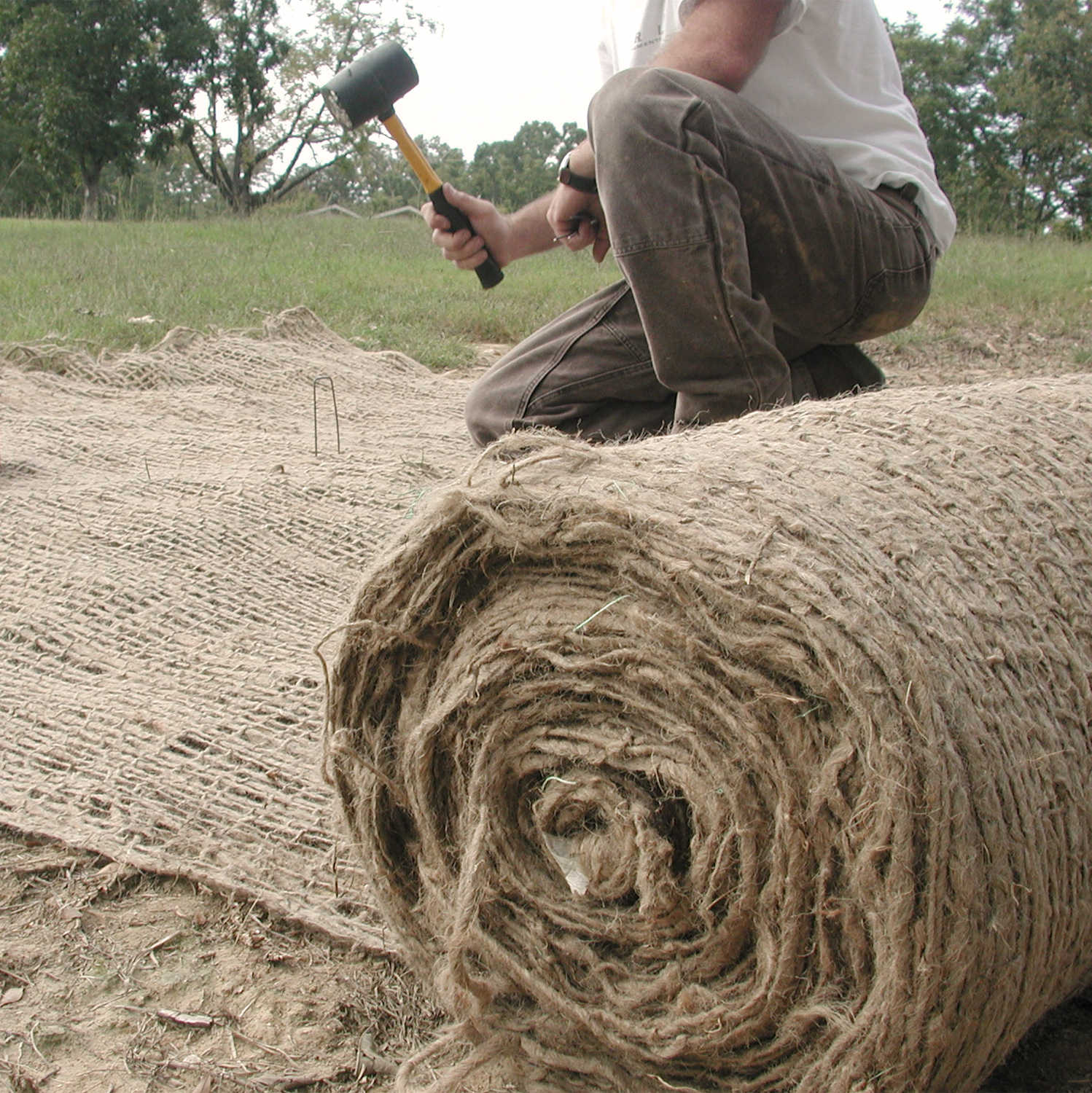- February 29, 2024
- Posted by: wellcoindustries
- Categories: Burlap, Erosion Control
Introduction
Erosion control is a critical environmental and agricultural practice, essential for preserving soil health, water quality, and landscape integrity. The choice of fabric for erosion control is pivotal, with burlap and jute being two of the most popular options. This article delves into the characteristics, benefits, and drawbacks of both materials to determine the ultimate erosion control fabric.

Understanding Erosion Control
What is Erosion Control?
Erosion control involves various strategies and materials to prevent soil erosion caused by wind, water, and other natural forces. Effective erosion control is key to sustaining agriculture, protecting infrastructure, and preventing sedimentation in waterways.
The Role of Fabrics in Erosion Control
Fabrics play a significant role in erosion control by stabilizing soil, supporting plant growth, and filtering water. They are an eco-friendly solution, offering a blend of effectiveness and environmental sustainability.
The Contenders
Burlap Overview
Burlap, made from the jute plant, is a coarse, natural fabric known for its durability and biodegradability. It’s widely used in various applications, including erosion control, owing to its ability to support seed germination and soil stabilization.
Jute Overview
Jute is a long, soft, shiny vegetable fiber that can be spun into coarse, strong threads. Like burlap, it is environmentally friendly and effective in erosion control applications, promoting water absorption and seed growth.
Comparative Analysis
Durability
While both fabrics are durable, burlap tends to have a slightly coarser weave, which can offer better soil stabilization in certain environments. However, jute’s finer threads provide excellent protection against erosion for more delicate applications.
Biodegradability
Both materials are highly biodegradable, minimizing environmental impact. Jute decomposes a bit faster than burlap, making it a slightly more eco-friendly option for short-term projects.
Cost Efficiency
Cost-wise, jute is often more affordable than burlap, making it a cost-effective solution for large-scale erosion control projects.
Erosion Control Effectiveness
Both fabrics effectively control erosion, but the choice between them depends on specific project needs. Burlap is preferable for harsh environments, while jute works well in areas requiring quicker biodegradation.
Ease of Use
Both materials are easy to install, but burlap’s sturdier nature makes it slightly more manageable during installation in rough terrains.
Case Studies
Real-world applications show both fabrics successfully preventing erosion in various settings, from riverbanks to construction sites, highlighting their adaptability and effectiveness.
Pros and Cons
Pros of Burlap
- Excellent durability
- Good for harsh environments
- Supports seed germination
Pros of Jute
- More cost-effective
- Faster biodegradation
- Suitable for delicate terrains
Cons of Burlap
- More expensive
- Slower biodegradation
Cons of Jute
- Less durable in harsh conditions
Conclusion
Choosing between burlap and jute for erosion control depends on project-specific factors such as budget, environmental conditions, and the duration of needed protection. Both materials offer unique benefits, making them invaluable tools in environmental conservation efforts.
FAQs
- Which fabric is more environmentally friendly? Both are highly eco-friendly, but jute’s faster decomposition rate might edge it slightly ahead.
- Can these fabrics be used together? Yes, combining burlap and jute can leverage the strengths of both materials for optimal erosion control.
- How long do these fabrics last? The lifespan varies by environmental conditions, but generally, burlap lasts 1-2 years, while jute can decompose within a few months to a year.
- Are they suitable for all climates? Both fabrics are versatile, but burlap is often better for extreme conditions, while jute is ideal for milder climates.
- Where can I purchase these materials? Burlap and jute can be purchased from agricultural supply stores, online retailers, and specialty fabric stores.
